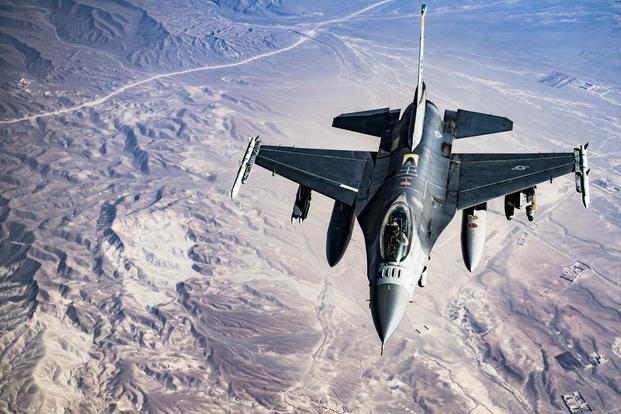The U.S. military is beefing up its strikes against the ISIS-K extremist group in Afghanistan while the ceasefire the Afghan National Defense Forces have brokered with the Taliban continues to hold, a top general said Wednesday.
The recent Taliban-Afghan agreement is the first unilateral ceasefire since the war in Afghanistan began in 2001, said Brig. Gen. Lance R. Bunch Assistant, Deputy Commander for Air, and Vice Commander, 9th Air and Space Expeditionary Task Force-Afghanistan, Resolute Support. But airstrikes on other hostile groups continue, especially the Afghan offshoot of the Islamic State of Iraq and Syria, called Islamic State-Khorasan province, or ISIS-K.
"We have conducted strikes against ISIS-K during this timeframe, a little over 80 of those strikes as we continue to do counterterrorism operations," Bunch told reporters via a video feed from Afghanistan, reiterating striking ISIS-K is not a part of the ceasefire.
The ceasefire began June 11.
Related content:
- Airstrikes in Afghanistan See Big Spike Following Spring Surge
- Afghan A-29 Drops First Laser-Guided Bomb on Taliban
- General: US Moving More Airpower to Afghanistan in Strategy Shift
The general said there has been a "slight increase" on ISIS-K targets since the start of the ceasefire, but did not cite specific numbers.
"We have increased our operations against ISIS-K [since] the beginning of this month" in eastern Afghanistan, Bunch said, adding that four companies of Afghan special forces have accumulated in the Deh Bala district.
Calling in airstrikes has been the sole responsibility of the Afghan National Defense Security Forces, who develop their own intelligence and identify the targets without the aid of U.S. Joint Terminal Attack Controllers, or JTACS.
"This is the single largest deployment of commandos on the battlefield, ever, in a joint special operations [mission]," Bunch said.
The 80 strikes against ISIS-K were in support of this buildup, he said.
When asked whether or not the U.S. continues to strike al-Qaida -- which remains a threat in country -- Bunch said he could not could not recall recent specific instance of strikes on the group, but added, "we continue to target any of the counter-terrorism type targets."
Before the coalition recently shifted assets away from striking the Taliban, strikes against al-Qaida and other terrorist organizations had been abundant in 2018.
Last month, U.S. airstrikes in Afghanistan reached a new record, marking the highest number of airstrikes this year in Operation Freedom's Sentinel for any month since October.
Fighter, attack and remotely piloted aircraft dropped a total of nearly 600 weapons during the month of May, according to the recent strike report from Air Forces Central Command. And more bombs were dropped over the 61 days of April and May than over the entirety of 2015, the data shows.
U.S. aircraft have conducted zero strikes on Taliban ground fighters since a ceasefire was announced June 11, said Bunch. However, the Afghan Air Force has conducted 38 self-defense strikes against the Taliban during the unilateral truce, he said.
"There have been 38 instances where the Afghan air force has been airborne and has conducted self-defense strikes in support of their ANA partners on the ground -- 38 instances where the Taliban did not honor the ceasefire," Bunch said.
-- Oriana Pawlyk can be reached at oriana.pawlyk@military.com. Follow her on Twitter at @oriana0214.













